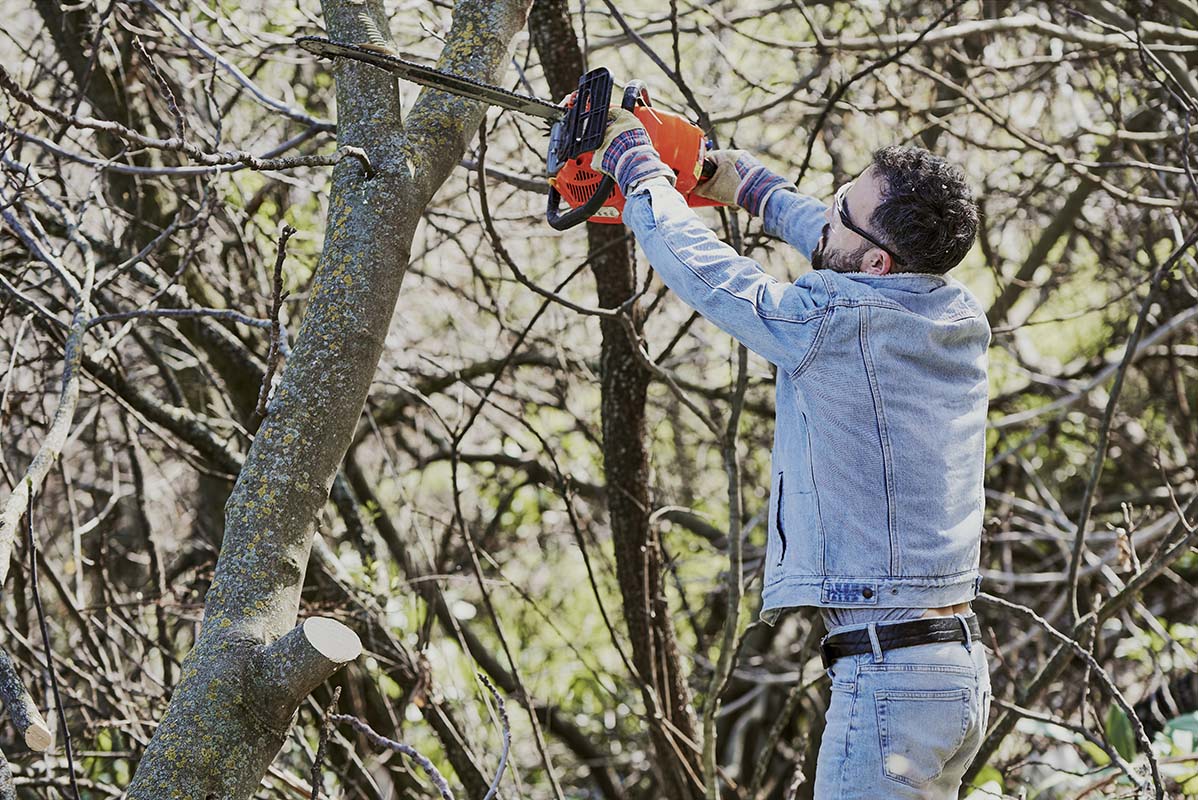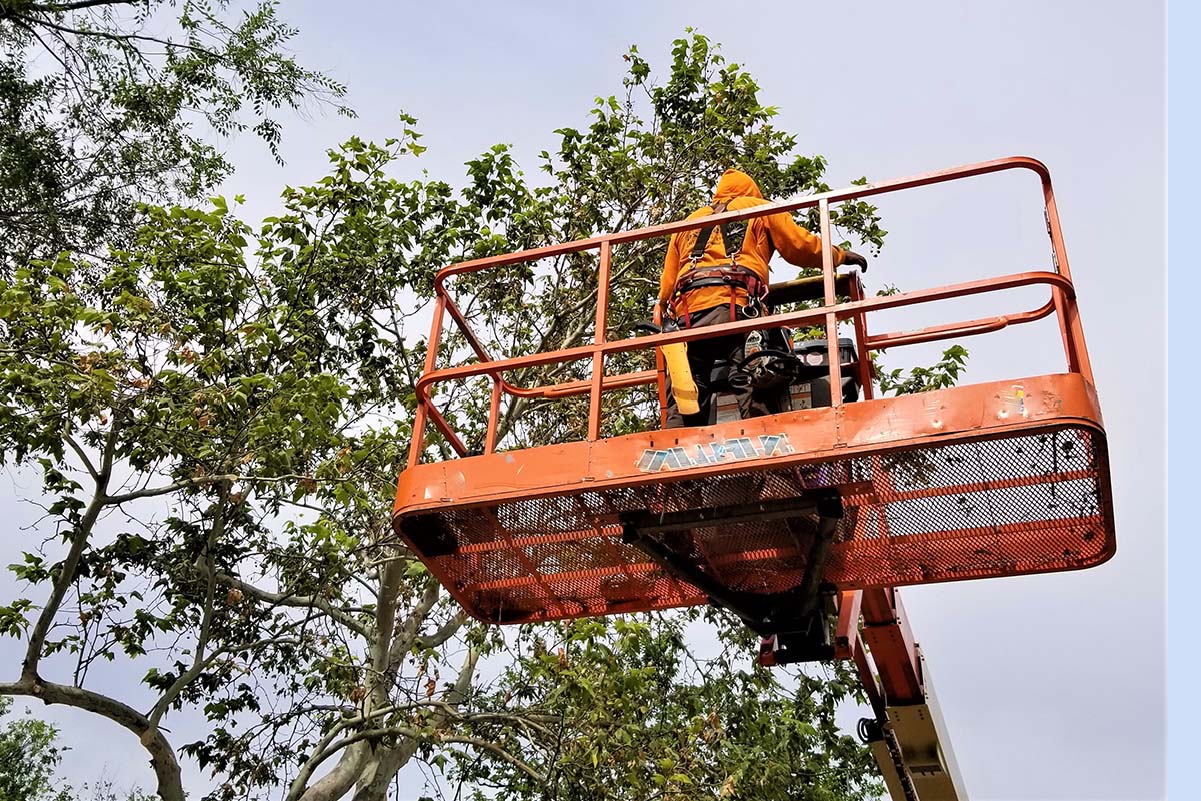
Tree Trimming Best Time of Year
Trees are beautiful and positively affect our health. One of the ways to care for the trees in your home is by trimming their branches as and when due.
You must know that every time is not the best time to trim a tree. Knowing when to trim your tree is essential for the health and longevity of your tree.
In general, the winter season is the ideal time to trim trees. The majority of trees are dormant from November to March; thus, this is the best time to trim them.
You’ll find more information about the best time to trim your trees in the following. If you don’t have the know-how or the tools, feel free to get in touch with our tree trimming experts.
Can You Trim Trees In The Fall?

Trimming trees in the fall could cause more harm than good to your trees than you expect. It is not advisable to trim trees in the fall although people are ready to begin trimming at this time of the year for some reason.
The best time to trim trees is not in the fall. It makes sense to hold off until the end of winter or after when the plant’s leaves have dropped. Your trees can suffer from premature trimming.
If you don’t want your tree to suffer from premature trimming, then it’s better you wait for a perfect season before you start trimming your trees.
Trees should be trimmed when there is a good likelihood that they will remain healthy because they have varied leafing and growth cycles.
Can You Trim Trees In Summer?
Early summer, before the warmth reaches its peak, can be a time to trim your tree but definitely not the best time. Summer trimming might be harmful to a tree that is suffering from heat stress.
Trimming in the latter half of the summer and early fall may also encourage new growth depending on the type of tree because it has little opportunity to harden before the arrival of winter.
Tree trimming maintains the health of the tree, lowers the chance that neighboring structures may sustain damage, and enhances the overall curb appeal of the tree
The below-listed are a few types of trees that can still be trimmed in the summer
- Maple trees
- Birch tree
- Walnut trees
Can You Trim Trees In Spring?
Large changes can most affect trees while they are idle in the early spring as they emerge from their winter rest.
They will also have a complete season of growth to recover from injuries before withering and this will help the tree sustain its longevity. Most tree trimming is done in the spring but this is not the best time.
Major tree trimming is most effective for most trees in late winter because wounds heal more quickly.
Only trim the following trees in the spring and at the appropriate time:
- Apple trees
- Cherry trees
- Peach trees
- Trumpet vine
- Wisteria
- Lilac
- Virginia creepers
Can I Trim My Trees Myself?

You can trim young, tiny trees yourself to shape or maintain their health. But it is usually preferable to call a certified tree trimmer if you want to trim large trees that need heavy equipment or a ladder to access them.
When it comes to trimming trees, some factors need to be considered, which include the impact of insects, the tree’s susceptibility to disease, and the surrounding landscape.
Once you decide to start trimming trees, you can start by removing any dead branches and living branches that are growing inward rather than outward, towards the tree’s centers.
Here is a simple guide to help you get started if you decide to trim your smaller trees:
- Use loppers, a sort of long hand pruner, and hand saws.
- Remove any branches that are diseased, dead, or decomposing at the next healthy branch.
- Remove any rubbing or inward-growing branches.
- Remove the majority of “suckers” (the new growth shooting up from the ground).
- On flowering trees, remove any dead flower buds.
Summary
It is advisable to know the right time to trim your trees, especially if you want a healthy life for your trees unless you are trimming your trees for safety purposes
You also need to understand the type of weather available at that particular time before you embark on trimming trees. This is because not every tree can be trimmed in any season or weather.
We also provide professional tree trimming in the Los Angeles Area:
What is the Best Time of Year to Cut Down a Tree?
The best time to cut down a tree depends on several factors, including the species of tree, the reason for cutting it down, and the location of the tree. Here are some general guidelines for when to cut down a tree:
If the tree is diseased or damaged, it should be removed as soon as possible to prevent the spread of the disease or further damage to the tree or surrounding plants.
If the tree is being removed to make way for new construction or landscaping, it is best to do so during the dormant season, when the tree is not actively growing. This is typically in the winter months when the tree is not producing leaves.
If the tree is being removed for safety reasons, such as because it is structurally unsound or poses a risk of falling on a home or other building, it should be removed as soon as possible. In this case, the season may not be as important as the need for prompt removal.
If the tree is being removed for aesthetic reasons, such as to improve the view from a home or to allow more sunlight to reach a garden, it can be removed at any time of year. However, some tree species are more sensitive to being cut down during certain times of year, so it is important to research the specific tree species before making a decision.
In general, the dormant season is the best time to cut down a tree because the tree is not actively growing and is less susceptible to stress and damage. This allows for a cleaner, more precise cut and reduces the risk of damaging surrounding plants. Additionally, the lack of foliage makes it easier to see the structure of the tree and determine the best way to make the cut.
Before cutting down a tree, it is important to consider the potential impact on the surrounding ecosystem. Removing a tree can change the microclimate, affect the habitat of local wildlife, and impact the overall health of the ecosystem. Therefore, it is important to consider these factors and consult with a professional arborist or tree care expert before making a decision to cut down a tree.
In conclusion, the best time to cut down a tree depends on the specific circumstances and should be carefully considered before making a decision. In general, the dormant season is the best time to cut down a tree because the tree is not actively growing and is less susceptible to stress and damage. It is important to consult with a professional and consider the potential impact on the surrounding ecosystem before cutting down a tree.
Which season is the worst to cut down or trim a tree
The worst season to cut down or trim a tree is typically during the active growing season. This is because the tree is more likely to be under stress and susceptible to damage during this time. Additionally, trimming a tree while it is actively growing can stimulate new growth, which can lead to more extensive pruning in the future.
The active growing season varies depending on the species of tree and the location. In general, deciduous trees are most active during the spring and summer, while evergreen trees are most active during the spring. Therefore, it is best to avoid cutting down or trimming deciduous trees during the spring and summer, and avoid cutting down or trimming evergreen trees during the spring.
It is also important to consider the specific reason for cutting down or trimming the tree. If the tree is diseased or damaged and needs to be removed for safety reasons, it should be done as soon as possible regardless of the season. In this case, the potential impact on the tree’s growth and health may be less important than the need for prompt removal.
In conclusion, the worst season to cut down or trim a tree is typically during the active growing season, when the tree is most vulnerable to stress and damage. It is important to consider the species of tree, the location, and the reason for cutting down or trimming the tree before making a decision.
If you have a palm tree that you’d like to prune yourself, check out our detailed guide on how to safely prune palm trees.

